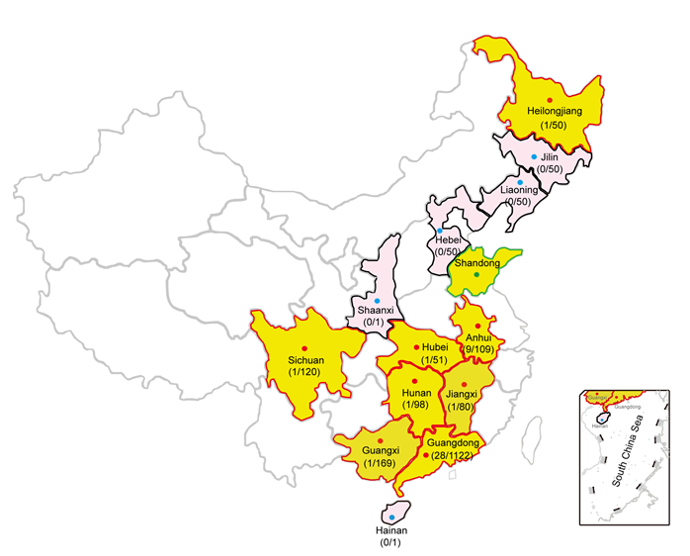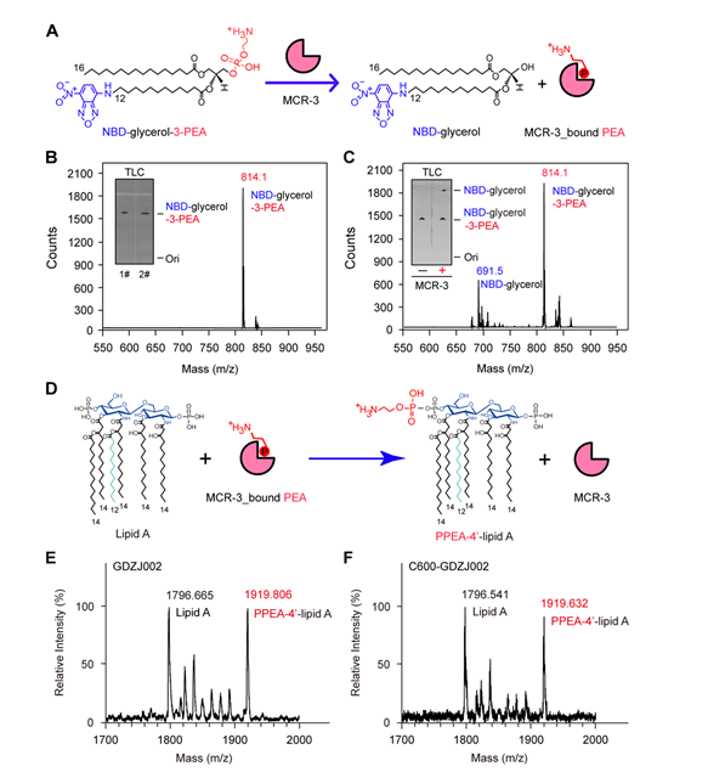ZJU scientists reveal new mechanism for MCR-3 colistin resistance
Mobilized resistance to colistin is evolving rapidly and its global dissemination poses a severe hazard to human health and safety. Transferable colistin resistance gene, mcr-3, first identified in Shandong, China, has already been found in several countries in multidrug-resistant human infections.
Antimicrobial resistance: global report on surveillance 2014 issued by WHO points out that over 1 million patients died of antimicrobial resistance (AMR) all over the world in 2013. A team led by Prof. Lord Jim O’Neil has estimated that AMR could result in 10 million deaths a year worldwide by 2050. Given the severity of the AMR issue, the G20 Summit, the U.N. Assembly and WHO proposed a global action to prevent and control the worldwide spread of AMR in 2016.
The research team, led by Prof. FENG Youjun with the School of Medicine, Zhejiang University, tracked the spread of mcr-3 within 13 provinces in China and provided a complete characterization of its evolution, structure and function.

A total of 6497 non-duplicate samples were collected from thirteen provinces in China, from 2016 to 2017 and then screened for the presence of mcr-3 gene by PCR amplification. mcr-3-positive isolates were analyzed for antibiotic resistance and by southern blot hybridization, transfer analysis and plasmid typing. Researchers then examined the molecular evolution of MCR-3 through phylogenetic analysis. Furthermore, they also characterized the structure and function of MCR-3 through circular dichroism analyses, inductively coupled plasma mass spectrometry (ICP-MS), liquid chromatography mass spectrometry (LC/MS), confocal microscopy and chemical rescue tests.
49 samples (49/6497 = 0.75%) were mcr-3 positive, comprising 40 samples (40/4144 = 0.97%) from 2017 and 9 samples (9/2353 = 0.38%) from 2016. Overall, mcr-3-positive isolates were distributed in animals and humans in 8 of the 13 provinces. Three mcr-3-positive IncP-type plasmids and one mcr-1-bearing IncHI2-like plasmid were identified and characterized. MCR-3 clusters with PEA transferases from Aeromonas and other bacteria and forms a phylogenetic entity that is distinct from the MCR-1/2/P(M) family, the largest group of transferable colistin resistance determinants. Despite the fact that the two domains of MCR-3 are not exchangeable with their counterparts in MCR-1/2, structure-guided functional mapping of MCR-3 defines a conserved PE-lipid recognizing cavity prerequisite for its enzymatic catalysis and its resultant phenotypic resistance to colistin. FENG Youjun et al. therefore propose that MCR-3 uses a possible “ping-pong” mechanism to transfer the moiety of PEA from its donor PE to the 1(or 4’)-phosphate of lipid A via an adduct of MCR-3-bound PEA. Additionally, the expression of MCR-3 in E. coli prevents the colistin-triggered formation of reactive oxygen species (ROS) and interferes with bacterial growth and viability.

These findings provide an evolutionary, structural and functional definition of MCR-3 and its epidemiology in China, paving the way for smarter policies, better surveillance and effective therapy.
The research article entitled “Spread of MCR-3 Colistin Resistance in China: An Epidemiological, Genomic and Mechanistic Study” is published in the July 27 issue of EBioMedicine.
。